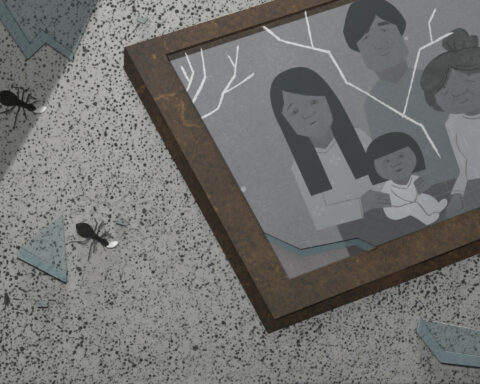Wanna make a quick buck? Join the thousands who are cashing in on the exciting field of animation training! Get in while it’s hot!
Hyperbole aside, animation education is booming in Canada. Schools vary in credibility but in amongst the fly-by-nights are excellent programs, many of which can trace their origins back to one source: the institute formerly known as Sheridan College.
It was Sheridan, in the 60s, which boldly offered a classical animation program for a non- existent industry. The big vision behind this program aimed to recreate the Golden Age of animation. Then in the 80s, came another innovative offering in computer animation. These programmes did more than serve industry, they actually helped build it. And over the years, they produced many excellent graduates and fostered strong ties with major studios in Canada and Hollywood. The curriculum Sheridan developed became the model for industry training. This was a true pioneering spirit.
Now Sheridan is at it again: though its computer animation programs remain intact, it has exchanged its flagship three-year classical program for a new four-year baccalaureate. Much of the old curriculum has been incorporated into the new programme but still, it is a decidedly different beast.
The biggest concerns centre on the change from a diploma to a degree programme. This means that students must now take a wider range of subjects. That may be a good thing, but it could water down a previously very focused experience. It also means a change in faculty. A major part of the old Sheridan model was that faculty came from industry. Baccalaureate programs, however, require that teachers hold a masters degree. And how many working animators also find time for grad school? The end result is a new curriculum taught by a very different kind of teacher. What kind of animator will emerge from this gamble?
And how is this affecting other Canadian animation schools? Brian Lemay, a former coordinator of Sheridan’s three-year programme, now heading Traditional Animation at Seneca College, feels it will help his institution. “It makes us more appealing,” says Lemay, “Rather than spreading things over four years and adding more ‘humanities courses,’ our programme is tightly packed with relevant assignments that help students build strong portfolios.”
From an employment point of view,” he continues, “If I’m looking at two good portfolios and one person has a four year degree and the other person has a three year diploma, I’m always going to hire the person with the better portfolio.”
At the Vancouver Film School (VFS), Joseph Gilland, head of classical and digital animation, says the strength of VFS lies in its intensive one-year approach. Such programmes have been criticized but Gilland feels that the results prove that the approach can work. Notably, VFS had 3 student films at the Annecy animation festival this year. The other strength Gilland points to is faculty. “We have some of the best industry pros in western Canada, very few of whom have masters degrees,” he says, “Degrees do not mean squat in the animation business.. Never have, and, I hope, never will.”
Credible animation schools possess key qualities, from B.C.’s Capilano through Ontario’s Max the Mutt to Miramichi in New Brunswick. One quality is focus. Whether training for industry or aiming to produce filmmakers like B.C.’s Emily Carr, these schools are very clear about what they are doing. Another quality concerns faculty. Generally you’ll find a consistent approach with, for example, good industry schools using experienced industry based teachers.
And then there is cost. Plain and simple, the four-year approach costs more. Many programmes make a point of keeping tuitions down while Sheridan began to raise tuitions years ago, based on its well-publicized track record. But can that record be applied to this new situation?
The new Sheridan seems betwixt and between; neither clearly academic, nor a provider for the industry. Reputation may carry Sheridan’s enrolment through to the critical spring of 2007, when the first crop of students will graduate. And those graduates may turn out to be brilliant: a new hybrid that brings together the best in craft and creativity.
But something troubles me about the motivation behind this shift. Sheridan’s original programmes were a response to an idea of what animation could be. This recent change comes from a more hardheaded place: an upper administration financial decision connected to provincial funding formulas. The switch to a four- year degree was mandated for the college’s benefit and the animation programme was changed to match that mandate. Hmmmmm…It seems to me that if they get a beautiful result this time, it will be a matter of luck, not a result of the same kind of vision which actually let a then obscure college lead the revival of a dying art form into a new golden age. For now, we’ll have to wait and see.










